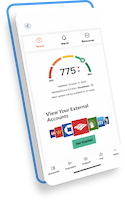Thirty years ago, when you wanted to get a home loan, you just walked to your local bank and they knew who you were. It took little more than a handshake and sign here; it was really simple. But today, you need to understand what it means to get a home loan. The easiest answer is you need to get pre-approved by a bank. Especially if you’re getting a mortgage, you need to understand your budget inside and out.
I like to break it down into four categories. Answer these questions, first and foremost, for yourself. I call them the four C’s.
- Cash. Simply, how much money are you working with?
- Credit. What’s your credit score? What’s your debt? Factor in student loans, car payments, and anything that’s credit-related. Your credit score is a huge factor in the types of interest rates you can get.
- Income. (There’s a C in it!) How much do you make, and what do you do for work? How do you get paid—salaried, commissioned, hourly? Do you get bonuses? These are all things that a bank looks at when you get a loan.
- Collateral. In other words, it’s the property you’re buying. In New York, you can buy a co-op. In other states, you can buy condos, townhouses, single or multi-family homes. This all plays into getting a mortgage when you’re a first-time homebuyer.
Then, the most important question, especially if you need a loan to get a home (which is the majority of Americans), is: Can you qualify to get a home loan? Follow this checklist, and you’re golden.
- Keep an eye on your credit score. Go to one of those free credit websites, like experian.com or freecreditscore.com. These will give you good indicators of what your credit score is. Also, some credit card companies and banks give you a free score as part of your credit card statement. That would give you a fair indication, as well. If you’re in the 500’s, that’s no good. If you’re in the high 700s and into the 800s, that’s an excellent credit score.
- Have your income documents ready. You need to have your pay stubs and your last two W-2s and tax returns. The bank looks at your current employment and your past work history.
- Prepare your asset documents (bank and brokerage accounts). If you’re getting ready to save up to buy a house and want to know how much you need to have saved, that’s where your asset documents come into play. Combined with your income, your assets give the full picture of your financial picture and mortgage eligibility. Your asset statements enable a lender to assess how you will make your down payment / equity contribution, how you will pay closing costs and how much reserves you’ll have left over. The bank will look at bank statements and any retirement or stock accounts that you may have. You need to have documents that represent anywhere your money is sitting.
- Have a budget. Know exactly what you can afford. Know exactly what you’re paying now. For example, if you’re a renter, the only things you are paying for are the rent and some utilities. But when you own a house, you have to pay real estate taxes and homeowners insurance, so take that into consideration. Of course, there are also tax advantages to having a mortgage, including interest write-offs. I would always defer to an accountant about tax advantages.
- Here’s a twofer:
- Look for a professional. It’s a cheapshot tip, but it’s so true. Even if you have all this information ready to go, it doesn’t mean you automatically get a mortgage. You’ll want to talk to a mortgage professional because they will give you guidance on the best mortgage product for you.
Let’s say, for example, you’ve just started out in your career and just started making some money. In that case, I might advise that you shouldn’t get a 15-year mortgage, even if you can afford a 15-year mortgage, where payments are higher for a shorter amount of time. Why? Well, as you get older and start blossoming in your career, there are going to be a lot of life expenses that come later down the road. With a 15-year mortgage, while you will pay your loan off faster, you’re stuck with higher payments than you’d have with a 30-year mortgage. With a 30-year mortgage, where payments are lower for longer, you can always choose to pay extra per month if you want to shorten the term of your loan. And if you’re making extra monthly payments, that means you aren’t actually bound to that mortgage for 30 years. You’ll have more flexibility. You could very well pay off your mortgage in less than 30 years, but it still leaves room for life’s curveballs. That leads me to part two: - Be ready to answer questions about your future needs. A professional isgoing to need you to answer questions to give you the best product that suits you for the long-term. “What are you planning to do in this house? How long are you going to stay here? Are you going to pay it off? Do you want to have children?” These are all questions we ask a potential homeowner. Talk to someone once you think you’re ready.
- Look for a professional. It’s a cheapshot tip, but it’s so true. Even if you have all this information ready to go, it doesn’t mean you automatically get a mortgage. You’ll want to talk to a mortgage professional because they will give you guidance on the best mortgage product for you.
Bonus tip! (Admittedly, this might be my wife talking). Don’t make this fatal flaw: Don’t jump into home shopping without first considering your mortgage needs. It’s not silly to have a checklist. When you shop for groceries, you have a checklist; you should have a checklist when you are getting a home, this is likely one of the largest investments you’ll make in your life, so don’t treat it lightly. Before you start, do your homework. Take notes, be prepared, and know what you want.





